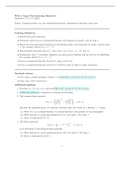Class notes
Math 100 Small Class notes - UBC 2022
- Course
- MATH 100
- Institution
- University Of British Columbia (UBC )
There is a big class and a small class in MATH 100 UBC. The file includes content from all lectures with practice problems downloadable from an online pdf book.
[Show more]



